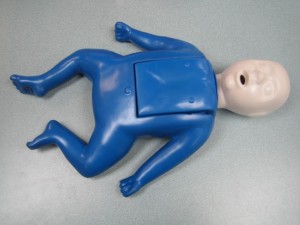A febrile seizure, also called a febrile convulsion, is a seizure that is provoked by a high-grade fever. It is particularly common in children between the ages of nine months and five years old, but it mainly affects toddlers. Typically, febrile seizure does not occur at the peak of the fever but will occur within the first 24 hours after the onset of the fever. Although it can be very worrying and alarming for parents and caregivers, it is often harmless and usually does not have permanent effects on the growth and development of the infant or child.
Types of Febrile Seizures
The two types of febrile seizures differ on the intensity of the symptoms they manifest:
Simple Febrile Seizure
- More common
- Lasts less than 15 minutes only
- Does not recur
- Also called tonic clonic seizure
Complex Febrile Seizure
- Lasts for more than 15 minutes
- After the first bout of seizure or the period of illness, another seizure may happen
- Absence of full recovery despite after an hour
- Also called focal or partial seizure – symptoms only befall in one part of the body as opposed to the whole body
Causes of Febrile Seizures
The precise reason for a febrile seizure is still yet undetermined. It is only known to be triggered by high-grade fevers of 38°C or higher (100.4°F). Infections to the body are the usual culprit of these high-grade fevers which include:
- Viral infections such as the flu (influenza) and chickenpox
- Tonsillitis
- Gastroenteritis
- Middle ear infection
- Post-immunization
Signs and Symptoms of Febrile Seizures
Signs and symptoms of febrile seizures generally last for only a few seconds to ten minutes and can range from being very mild to severe. The following are indicative that a child is suffering from a febrile seizure :
- Rolling of the eyes
- Stiffening of the limbs
- Abrupt contraction of the muscles (tightening) that lasts for several seconds
- Rhythmic jerking of the body
- Crying or moaning
- Vomiting
- Foaming of the mouth
- Biting the tongue
- Urinating
- Sudden fall
- Trouble breathing
- Cyanosis of the face if the airway is obstructed
- Loss of consciousness or unresponsiveness
First Aid Management for Febrile Seizures
The most important thing a parent or caregiver can do is to not panic. Not much action can be done on a child that is suffering from febrile seizure, except to administer first aid to prevent injury from befalling on the child.
- Do not try to restrain a child that is suffering a febrile seizure. Moreover, do not put anything inside the mouth. This may only result to more injuries to the bone or soft tissues, or worse, obstructing the airway.
- As much as possible, do not move the child from where they are unless completely necessary, such as in a swimming pool.
- If the child is near a hard surface, pad the surface with clothes or pillows.
- If furniture is near the child, move it away from the him/ her.
- If the ground is hard and can cause scratches or bruises, attempt to slide a blanked under the child.
- Loosen any tight clothing, particularly around the neck.
- If there is vomiting, turn the child to his/her left side.

Febrile seizures are seizures that are common in children, which triggered by a high-grade fever. Fortunately, these febrile seizures do not pose permanent damage.
